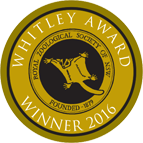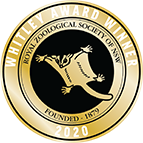An Atlas of the Birds of NSW & the ACT Vol. 1
FOREWORD
Australians are privileged to have their lives enriched by an immense diversity of native fauna, and the 800-odd species of bird are the signposts of this biodiverse heritage. A skilled, enthusiastic (and rather crazy) bird watcher is able to see more than 250 species in a single day in just the state of New South Wales, and most of these species will be unique to Australia. But with this privilege comes the responsibility of living our lives in a manner that ensures that this environmental capital is not irreversibly eroded.
Unfortunately, we do not have a good record in this regard as is evident from the 2011 Action Plan for Australian Birds which identified 27 extinct species (or subspecies), 20 critically endangered, 60 endangered and 68 species (or subspecies) vulnerable at a national scale. Under the International Union for the Conservation of Nature definition, a critically endangered species is one that has a greater than 50% chance of becoming extinct within the next 10 years (or 3 generations) if the threatening processes remain in force. Clearly, we do not have much time to act if we are to conserve the species already appearing on our threatened species schedules. Perhaps of even greater concern, we have insufficient knowledge to make an assessment of the population trajectories of most species of Australian fauna.
Determining the conservation status of a species is not some arcane art. It inevitably involves expert opinion but there are rigorous numerical guidelines that underpin the determinations. The criteria rely on assessments of population size, rates of decline, geographical range and the degree of population fragmentation. Committing to the long-term collection of the data required to make these assessments is not a trivial exercise and it is certainly beyond the vision of any government jurisdiction. But for birds, a dedicated collaboration of ornithologists has worked towards a systematic survey of the 804,000 km2 of land within New South Wales, to document the changing distributions of the bird species that find their homes in this state. An Atlas of the Birds of NSW & the ACT is the rich fruit of these labours – rich because it is underpinned by five and a half million records of over 535 species!
Mapping the fine-scale distributions of each species is just the launching pad, with the Atlas also providing an invaluable index of changes in species occurrence over time. Critically for conservation assessments, these changes are recorded over a 25-year period, providing the multiple-generation time frames necessary to assess population trends using IUCN listing criteria. These quantitative data have already proved to be highly influential in listing threatened species such as the Little Lorikeet and White-fronted Chat under the NSW Threatened Species Conservation Act. The Atlas will have even greater influence in the future now that the data, including seasonal distribution maps and temporal trends, are available in printed form.
The Atlas also places its quantitative survey data in a long-term context by providing an assessment of historical changes in species distributions and status. This historical treatment has unearthed a wealth of early records that are not discoverable on-line, and aside from strengthening the novel data, the comprehensive scholarship that has been invested in the compilation of these records makes a precious resource its own right. The Atlas will prove an invaluable tool for scientists and wildlife managers and will result in more cost-effective conservation management.
Conservation intervention is most challenging when delayed until a species is obviously in trouble and this is clearly apparent from the difficult, expensive and uncertain quest to prevent the extinction of flagship species such as the Regent Honeyeater and Orange-bellied Parrot. An Atlas of the Birds of NSW & the ACT provides an early warning system, flagging species that should be monitored closely and providing the basis for targeted research and conservation. It also enables the detection of biodiversity hotspots and critical locations in a species’ range that might be added to the conservation reserve network before the species requires direct conservation intervention.
This publication is a tribute to the bird-watchers who have generously donated their time to conduct systematic, comprehensive and repeated surveys of an enormous area over decadal time scales. It is an extraordinary achievement and with luck will encourage a new generation of Atlassers to continue a vision that is proving to be an essential component of strategies directed towards conservation of the avifauna of our region.
Dr Richard Major
Principal Research Scientist, Australian Museum









